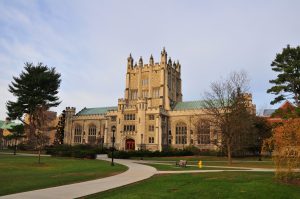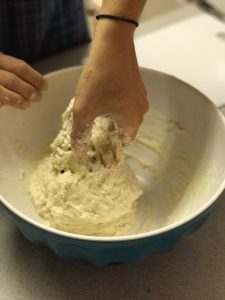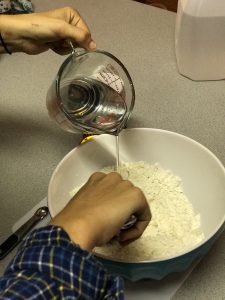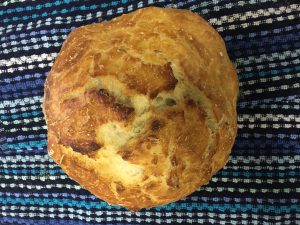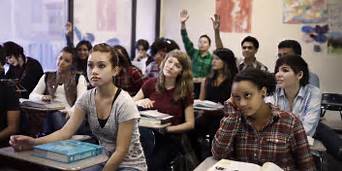 Those that reply “no” simply haven’t read or seen convincing enough imagery. Because I certainly am nostalgic. I’m nostalgic for a time, a place, and an ideal that I’ve never personally experienced: the women’s college.
Those that reply “no” simply haven’t read or seen convincing enough imagery. Because I certainly am nostalgic. I’m nostalgic for a time, a place, and an ideal that I’ve never personally experienced: the women’s college.
It’s a concept that used to sit squarely associated with upper-class sophistication. Families packed their children off to these institutions – Wellesley, Bryn Mawr, Mount Holyoke – with some of the family jewelry, and perhaps a horse, to study Literature and Art History and maybe find a husband to boot. Many of these schools existed in a kind of domestic partnership with near by all-male schools: Wellesley to Harvard, Vassar to Yale, and so on. Because of the close physical proximity and the tendency of both schools to attract the same “types” of student, many of their alums ended up married.
My grandmother attended Agnes Scott in the 50’s. A small smile appears on her face when she recalls the orchestrated courtship between students. The boys from the men’s college nearby would call her dormitory’s phone, the girls would line up and down the hallway and wait their turn to receive the phone and be asked to some dance or soiree. The image makes me smile as well. Despite my constant monologues on feminism and equality (just ask my housemates), I still find that a part of me yearns to know what it was actually like in those feminine institutions during the mid-20th century, all coifed curls and 10 PM curfews.
These schools, in their heyday, boomed. The reason? The elite higher education institutions of the day prohibited admission of the gentler sex, necessitating the creation of separate universities where lucky daughters would earn their degrees. By 1927, a coalition of prestigious women’s schools emerged, the “Seven Sisters” of Vassar, Smith, Wellesley, Mount Holyoke, Bryn Mawr, Radcliffe, and Barnard. These colleges were considered the feminine counterpart to their all-male colleagues, the Ivy League. If anyone has seen the 2003 film staring Julia Roberts, Mona Lisa Smile, you’ll get the feeling: a kind of female-version-of-Dead’s Poet Society, an Amazonian utopia of feminine intelligence. They are also the alma maters of some illustrious literary alums: Margaret Atwood (writer, Radcliffe), Elizabeth Bishop (poet, Vassar), Emily Dickinson (poet, Mount Holyoke), Ursula Le Guin (writer, Radcliffe), Sylvia Plath (poet, Smith), Gertrude Stein (critic and writer, Radcliffe), and more.
But, despite this legacy of badass (excuse my French) women, the “women’s college” itself is a dying breed. In the 1960’s, there were 244 single-sex institutions of higher education in the U.S. Now there are 44. It’s an inevitable, but nonetheless unhappy, phenomena. Kids don’t want to go to college without the opposite gender anymore.
On one hand, I understand this: I did not choose (or even really consider) a women’s college for myself. But on the other, I don’t: I do have experience in an all-female learning environment, and it was one of the best things that has ever happened to me. I had the great good fortune to receive my secondary education at a private, all-girls school in the south. It was exactly like you would imagine it to be. Uniforms were crisp plaid and saddle oxfords, physical education courses included required lessons in dance and poise, and the favored afternoon treat of “tea cakes,” frothy confections consisting of crumbly bases piled high with white glaze and baked fresh in-house. Everything was white and soft and distinctly feminine. I still recall the heady scent of the blooming magnolia trees in spring, covering the campus like a blanket. When I recount fond memories of my experiences at an all-girls’ school, many people who don’t understand the allure balk: “but it’s crucial to be educated alongside boys at that age, you’ll be handicapped for life not knowing how to interact with men!” As if the absence of male genitalia in my high school classrooms would somehow render the male sex a mystery to me for life. It was truly a treasured time in my life. Who wouldn’t want to experience that kind of closely caring community?
The answer is girls and boys both, apparently. To flip the gender coin, today in the U.S. only four non-religious all-male schools remain, including one just a stone’s throw away two hours southeast in Hamden-Sydney. This university itself was once a bastion of masculinity, admitting only men until 1985, when fiscal necessity trumped the protests of reluctant alums. Those holdouts were evidently placated with a compromise: while the gentler sex would be admitted, the ratio of male-female students would never creep above 51-49: the male would always hold the majority. I like to tuck this little fact away to remind myself with when I feel W&L is getting too progressive (insert sarcasm here). Despite that tidbit, we have come a long way since the 80’s: now, the school is affectionately referred to by some as “Whiskey & Libido” University – a nickname that is, truthfully, appropriate.
So, W&L went the co-ed route, and barely any masculine fortresses of higher education remain impervious to feminine intrusion. Likewise, one of the few remaining women’s colleges, Sweet Briar here in Virginia, went belly-up in May 2015, 114 years after the institution’s inception. In old photos, the women of Sweet Briar all look so much older than I feel now. I mean, those women were undeniably women when I, at age 22, still find it difficult to use that word when referring to myself or my peers without discomfort. This, I think, is the crux of why my generation has killed off the single-sex institutions of our grandparents’. They – and their sepia-colored scholars – are simply too old for us. We have outgrown them by slowing the process of “growing up.” And while I’m quite happy where I am, the nostalgia still comes, for a time and place and an ideal where I might be a little less millennial, and a little more adult.

